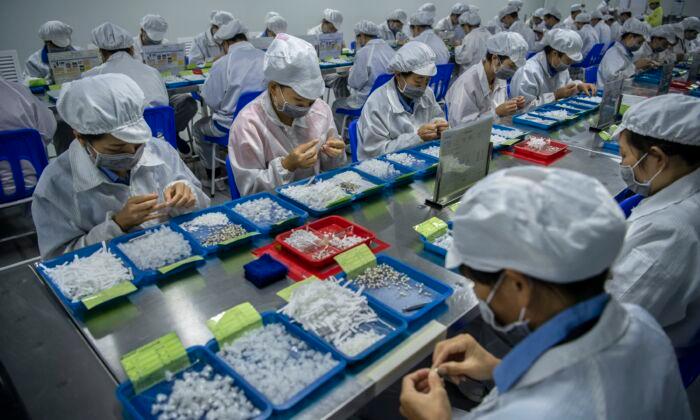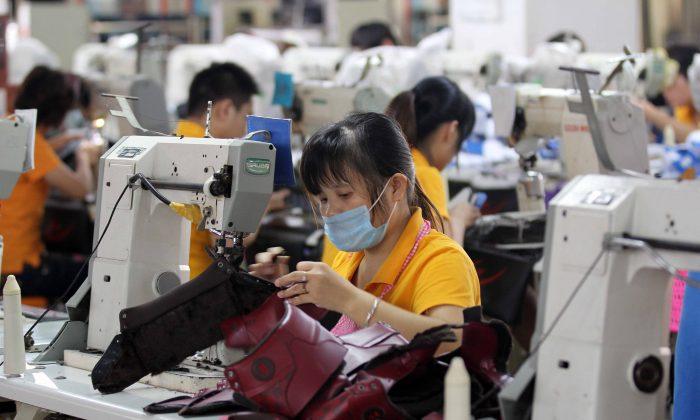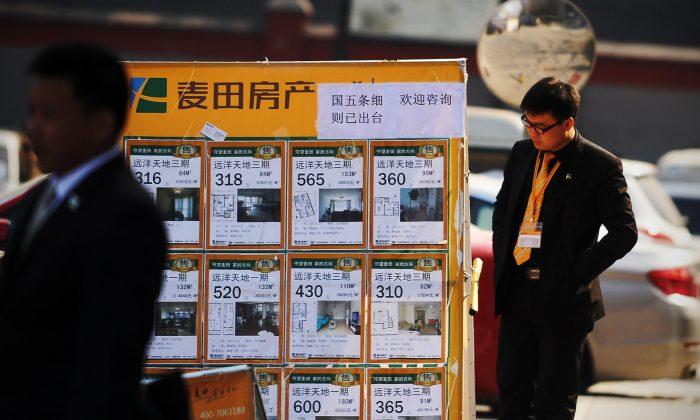Real estate, not industrial expansion, has been the key to China’s rapid economic growth in recent years, claims a report published by the Chinese Academy of Social Sciences on 25 Oct. 2010.
The “Blue Book of National Competitiveness” explains that China achieved its economic growth in the past 20 years not through upgrading its industrial capacity, but through the consumption of resources and expanding investments, especially the extensive expansion of real estate development.
The report points out that China’s current industrial structure is uncompetitive, something, it says, that should be rectified immediately.
Chen Pokong, a prominent commentator on China’s economy, believes the statement is valid. “For the past 30 years, China’s ‘reform and opening up’ policy has actually been an approach with high input, low output; high cost and low efficiency.”
Economic growth has relied on the manufacturing sector, consuming vast amounts of resources and energy. Growth will have difficult to sustain with such a poorly efficient model, Chen argues.
This is compounded by pervasive corruption: local Party officials’ collusion with real-estate developers and the construction of face-saving projects that end up unusable have created a “huge bubble” in the economy, Chen said.
Real estate prices are thus driven up, making housing often unaffordable for the middle and white-collar workers. “After adjusting the real estate development output, China’s economic growth is very doubtful,” Chen said.
Dr. Cheng Xiaonong, an economist living in the U.S., says that over the last two decades, China’s economic growth came from two sectors: civil infrastructure investments (including real estate) and exports.
However, over the past six or seven years, exports didn’t grow all that much, and domestic consumption has dropped to 30 percent of GDP. To boost the figures authorities resorted to wasteful real estate development and infrastructure investment, like new office blocks for Party officials, and myriad reservoirs, dams, and highways, Chen said.
“Tens of millions of vacant houses is a waste,” Chen says, adding that the ceaseless construction has polluted the environment and wasted energy and resources on a massive scale. ”It also made China’s economic growth lose the best opportunity for economic restructuring. China’s industrial competitiveness actually did not improve,” Cheng said.
Taking the long view, both Cheng Xiaonong and Chen Pokong say that China’s current economic growth trajectory is unsustainable, the economic structure will become increasingly deformed, and problems will only worsen.
The authors of the Beijing Blue Book, however, are much more optimistic. The authors say that China is full of potential, is gradually becoming one of the strongest countries in the world, and makes the prediction that by 2050 the country’s overall national competitiveness will be second to that of only the United States.
The Chinese Academy of Social Sciences is the leading ideological institution of the Chinese Communist Party. Part of its purpose is to propagate Party viewpoints and policy from a scholarly perspective on a range of social issues.
Read the original article in Chinese.



